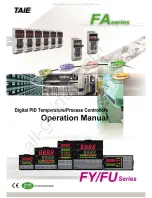
Chapter 3: Applications
3.3.2 – The Induction Motor (continued)
Obviously, the larger the difference between the developed torque and the absorbed torque, the
faster the acceleration and the quicker full speed is reached, and the greater the stresses
experienced by the supply and drive systems during the acceleration process. An “ideal” start
would accelerate the load with just sufficient force to reach full speed smoothly in a reasonable
time, and with minimum stress to the supply and drive mechanisms.
Generally speaking, the motor speed/torque characteristic is controlled by the rotor resistance. A
motor with high rotor resistance can generate its peak torque (pull-out torque) at standstill, giving
the high break-away torque characteristic which reduces steadily as the speed increases, and
becomes zero at synchronous speed. At the other end of the scale, a motor with a very low rotor
resistance will produce a low starting torque, but will generate its peak torque closer to the
synchronous speed. Consequently, this type of motor runs at full power with higher operating
efficiency and low slip speed. It is possible to combine the twin requirements of high starting
torque and efficient full-speed operation within a single motor by techniques such as double-cage
or deep bar design, and this usually is the motor characteristic chosen for lifting and hoisting
applications:
Figure 3.3.2.4: Torque/Speed Curve – High Starting Torque
However, most induction motors are designed to have a “standard” characteristic that provides a
compromise between starting torque and operating efficiency. To summarize,
an induction motor
will only start and accelerate when it produces more torque than the connected load absorbs.
This is true for all speeds, including standstill and full speed.
3.3.3 – Starting Induction Motors
Starting a de-magnetized induction motor from standstill is a demanding and complex process. At
the instant of switching, all the energy must be present that is necessary to magnetize the motor, to
provide the acceleration force, to supply the kinetic energy of the rotor and load, and to overcome
the mechanical and electrical losses. To do so at full supply voltage places considerable stresses
on the supply, the motor windings, and the iron cores of the stator and rotor. Excessive
acceleration of a rotor when the mechanical load is small can produce torque oscillations in the
shaft, causing severe wear to transmissions, gears and drives. Excessive acceleration when the
load inertia is high, such as in centrifugal fans, causes belts to slip on the pulleys, producing rapid
wear and early failure.
Locked Rotor Torque
( LRT, M
A
)
Pull Out Torque ( M
K
)
TORQUE
Pull-up Torque
Full Load Torque ( FLT, M
N
)
Synchronous speed
Figure 3.3.2.4
Torque/Speed Curve – High Starting Torque
0
SPEED
S
SR44 Series Soft Starter User Manual
1st Ed, Rev B 07/31/2019
3–10
Summary of Contents for Stellar SR44
Page 1: ...STELLAR SR44 SOFT STARTER USER MANUAL SR44 M WO 1st Edition Revision B...
Page 2: ...BLANK PAGE SR44 Series Soft Starter User Manual 1st Ed Rev B 07 31 2019...
Page 6: ...SR44 Series Soft Starter User Manual 1st Ed Rev B 07 31 2019 w 4 BLANK PAGE...
Page 8: ...BLANK PAGE SR44 Series Soft Starter User Manual 1st Ed Rev B 07 31 2019...
Page 12: ...Table of Contents BLANK PAGE SR44 Series Soft Starter User Manual 1st Ed Rev B 07 31 2019 t 4...
Page 23: ...ELECTRICAL INSTALLATION 2 CHAPTER CHAPTER 2 2 CHAPTER BLANK PAGE 2 1c...
Page 75: ...KEYPAD MENU ITEMS AND PARAMETERS CHAPTER 5 CHAPTER CHAPTER 5 BLANK PAGE 5 5 1c...
Page 237: ...BLANK PAGE SR44 Series Soft Starter User Manual 1st Ed Rev B 07 31 2019...
Page 238: ...SR44 Series Soft Starter User Manual 1st Ed Rev B 07 31 2019...
















































